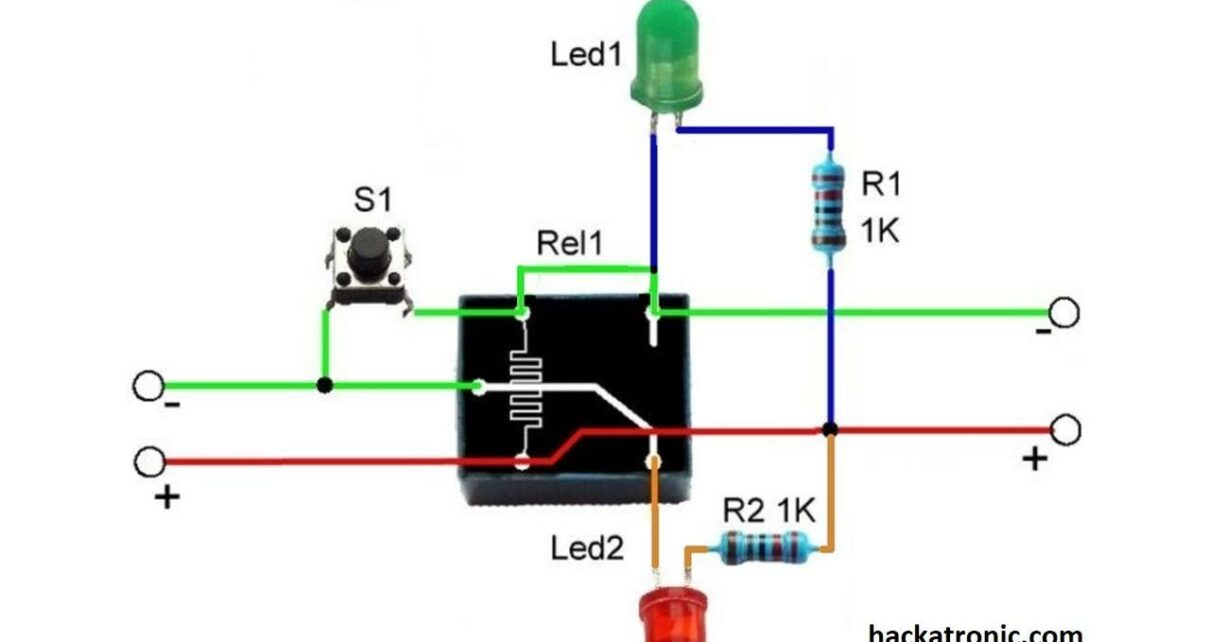In this tutorial, we will see how to make a short circuit protection using Relay. Many times accidentally terminals of batteries and other power supplies get short-circuited. Due to this, they get hot and start degrading. In the case of lithium-ion or lithium-polymer batteries, they may catch fire due to short-circuit or even get blast. So we need a protection circuit to protect our batteries from damage due to the short circuit. Many power supplies don’t come with built-in short circuit protection so there also we need protection against short circuits.
We can make a very simple battery short circuit protection using relay. This is a very cheap and effective short circuit protection circuit. It will cost you a maximum of 50 rupees.
What are the components you need?
- 5V or 12V Relay Module depending on battery voltage.
- One Green and one Red LED.
- Two 1k resistors.
- One push button normally opens the contact.
Short Circuit Protection With Relay:
Circuit Connections:
The negative terminal of the battery/power supply is connected to the common terminal of the relay. The positive terminal connects to one end of the relay coil, it is common for input and output. Push-button is connected between the negative terminal and second terminal of the coil, also this terminal is shorted with the normally open terminal of the relay. Red LED is between the normally close terminal and negative terminal. Whereas Green LED connects between the normally open and positive terminal of the battery.
Working of Short Circuit Protection Using Relay:
The working of this circuit is based on the principle that “Current always try to flow from the path of least resistance”. The circuit is normally open and Red LED Glows when we connect a power source to the input terminal of this circuit. Red LED indicates a short circuit and Green LED indicates that output power is ON. When we press the push button coil of the relay becomes active and it switches from normally close to normally open contact. You can see that even after leaving the push button the relay stays in a latched condition. The current required to keep that relay turned on is coming from a normally open terminal. This is how the circuit comes in on state. We can connect any load to the output terminal the circuit will work.
When overloading or short circuit occurs or when we short the output terminals of batteries a huge current flows through the circuit. The voltage across coil terminals becomes nearly zero, entire current tries to flow from the least resistive path. Relay immediately Switches from normally open terminal to normally closed terminal protecting our power supply or battery. This is how Short Circuit Protection Using Relay works. If you have any queries comment down below.




This will not work. You have hard wired your inputs to your outputs – and the relay will not offer any short circuit protection.
Thanks for telling fault
I believes that S1 is normally opened
röleye 1N4001 bağlarsanız çalışır diyotu rölenin 2 nolu pinine anot 5 nolu pinine katot baglarsanız güzel çalışıyor